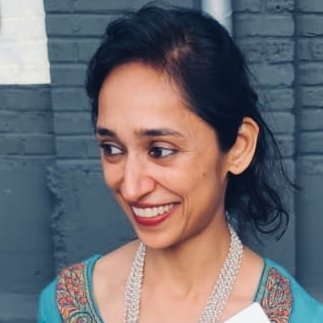My parents are from South Asia. When I visited their home cities growing up I had to be careful about so many things. The water. Street food that could send me to the hospital. Sporadic electricity. But those trips were worth it. Partly because I got to see extended family, but also because I got something I was unwittingly starved of for so much of my life in suburban Atlanta: the ability to walk to a neighborhood market.
Outside of the everyday life essentials that these small businesses provide—milk, toothpaste, Nutella sticks, Advil—they give us something invaluable: the opportunity to connect with the people living immediately around us. Our neighbors.
ATL is full of incredible people from all over the world. This is increasingly obvious to me as I write stories for my newsletter 285 South, driving across the suburbs and learning about people’s worlds, transporting me to Haiti, Afghanistan, Nicaragua, Burma, Syria. I’m exposed to struggles that underpin so many people’s experience here: transportation, social isolation, and disconnection.
Building that connective tissue that so many people were used to living with in their home countries can be tricky since we’re so often locked up in our homes or our cars or going from our homes in our cars to various destinations, deadened by the traffic in between.
Everyone in metro ATL deserves a local market they can safely and comfortably walk to, with no soulless parking lots or major roads in sight. With the starting point of a market, a world of possibility opens up. Add a few tables and chairs, and people can chat and sip their morning coffees, toilet paper rolls tucked under their arms. Put up a bulletin board, and folks are learning about a donation drive on their street or a lost hamster. Maybe a lonely grandma who’s picking up milk for her chai meets another grandma and they go for a walk together. The opportunities are limitless.
Those opportunities extend to reasonably priced cafes with outdoor seating, mini outdoor farmers markets, community gardens, and so much more. Third places such as these are essential to any world-class city. And in so many cities outside of the U.S., they’re a no-brainer.
This summer, I took my kids to Srinagar, the largest city in Kashmir, to visit family. They had a similar appreciation of this street-centered lifestyle. When we got back to our house in Decatur (arguably one of the more “bustling” and foot-trafficked parts of ATL’s metro), we all felt an emptiness we couldn’t quite articulate. Yes, we could walk 20 minutes to Dancing Goats to buy a $5 latte, but somehow it wasn’t the same. My nine-year-old son eventually summed it up best. He said he missed the “busyness” of Kashmir.
Atlanta ranks among the worst cities in the country for walkability, according to a 2020 report by the Institution of Transportation and Development Policy. Among the report’s recommendations? Update zoning to improve mixed-land uses, incentivize smaller but more frequent options like vegetable stands and kiosks, and encourage new uses of public spaces.
My friend Soraya moved from Afghanistan to an apartment in North Decatur with her husband and baby in 2022. She’s originally from Bamiyan, a rural province surrounded by rocky cliffs, about 3.5 hours away from the capital. She lived with or within walking distance of her extended family and got around on foot.
But from her Lawrenceville Highway apartment now, there’s nowhere she can comfortably walk to. Almost all day every day, she’s at home with her now two babies, with not so much as a public park she can take her children to, much less a market. Her three-year-old daughter is learning English from YouTube.
One afternoon, I got a call from her husband. Soraya had left her wallet at the nearby Goodwill and they needed help finding it. I wondered how she had gotten there. He told me she had walked. It was only a mile away, but the image of Soraya, heavily pregnant, and pushing a stroller along Lawrenceville Highway while cars zoomed by her hurt to think about.
Aisha Amani, also from Afghanistan, explained to me why she was desperate to start driving when I interviewed her in the spring. She just wanted to get groceries on her own. And she was frustrated, sitting at home most of the day in the exurb of Loganville. “I’m not used to getting help,” she said. In Kabul, where she raised her children as a single mom, she said she was much more independent.
My mom grew up in Srinagar, surrounded by the Himalayas. Like Soraya and Aisha, she walked to the market, lived with family, and knew her neighbors. She now lives in Tucker, not far from the bustling immigrant center that is Jimmy Carter Boulevard. I’ve lost count of the number of times she’s exclaimed, “I just want somewhere to sit!” She often ends up at a commercial chain, drinking coffee with my dad. Their view—depending on exactly where they’re sitting—is either a vast parking lot or the six lanes of Jimmy Carter Blvd.
Of course, these walkable community oases already exist in some parts of metro ATL. There’s Refuge Coffee in Clarkston, a community stalwart known for bringing together people from all over the world for its markets, annual iftar, and daily coffees.
There are also squares and walkable destinations in more affluent parts of the metro area: Decatur Square, Virginia Highlands, Kirkwood, as well as places like Avalon and The Battery. Good intentions or not, these places oftentimes become car-attracting destinations that prioritize commerce over everything.
After visiting one of these developments, it’s so refreshing to embrace the intimacy and ordinariness of a neighborly, walkable space. After a casual stroll, you pick up the hot sauce your scrambled eggs were screaming for and chat with your neighbor who just ran out of paper towels. Or maybe you bump into a fellow parent from your child’s class and commiserate over the deluge of school emails. Perhaps you even sit down and join a neighbor who looks like they’ve had a tough day and enjoy some tea.
ATLiens are plucky, and they’re fostering community all the time, despite our car-centric city metro area. Immigrants and refugees, in particular, build tight-knit communities with those from their home countries. They drive across suburbs to each other’s homes, attend dinners at strip-mall event halls, and worship alongside each other at mosques, temples, and churches. But we need more opportunities to deepen our connections to the land we’re standing on and those we share it with—the kind of stuff that can improve our daily quality of life.
This type of built-in, in real life, social connectedness—as the CDC has pointed out and the pandemic made increasingly clear—is good for both individual and community well-being. Mental health is a growing concern in the Peach State. In fact, Georgia’s 9-8-8 crisis line received more calls this year than last, and received 23,658 calls, texts, or chats in April alone. Opportunities to break down the isolation that can lead to or exacerbate poor mental health can only be a good thing here.
A few weeks ago, I realized I had a strawberry shortcake in my fridge.
I texted my neighbors: “Come out to our front yard in an hour if you want to eat cake!” Sure enough, one by one, they popped out of their houses like small forest animals emerging from hibernation. My next door neighbor even brought along an extra cake.
As the crowd grew and the slices got skinnier, we all stood around, giggling and chatting for a while. Imagine for a moment what life could be like in this city if every ATLien encountered their fellow community members like this on the regular.
At one point, I ran out of spoons and forks and had to hand a toddler a large serving spoon to enjoy her treat. She didn’t complain.

Sophia Qureshi
Sophia Qureshi is the founder and editor of 285 South, the first news publication dedicated to reporting on metro Atlanta’s fast growing immigrant and refugee communities. She is a writer-in-residence at Canopy Atlanta, and her work has been published in Atlanta Magazine, the Atlanta Civic Circle, and the Atlanta History Center.
